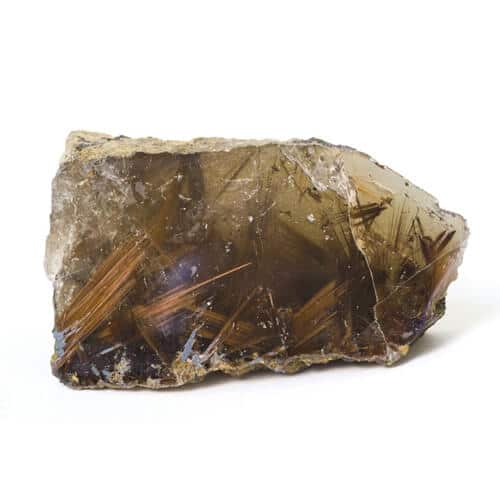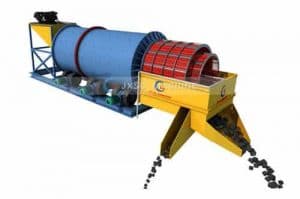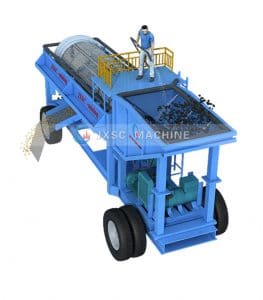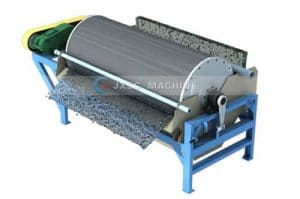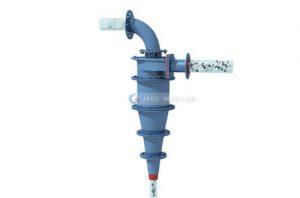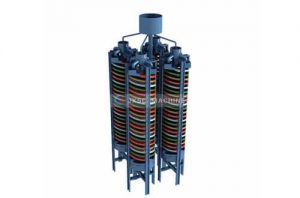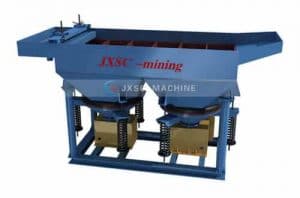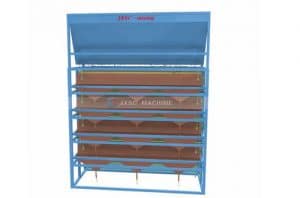Rutile Mining Process
Rutile
Description
Rutile is the most common and stable form of titanium dioxide found in nature. It forms under high pressure and high temperature in igneous and metamorphic rocks. It is a key ingredient in paint and also a useful component in optical equipment.
| Type | Crystal System |
| Mineral | Tetragonal ditetragonal dipyramidal |
| Mineral Classification | Color |
| Oxide | Reddish-brown, red, pale yellow, pale blue, violet, rarely grass-green, or black |
| Chemical Formula | Luster |
| TiO2 | Adamantine to submetallic |
| Streak | Fracture |
| Bright red to dark red | Uneven to sub-conchoidal |
| Mohs Hardness | |
| 6.0 - 6.5 |
Relation to Mining
Rutile is recovered through surface mining and dredging of dense beach sands.
Uses
Because it has a very high index of refraction, rutile is used for many purposes in optics, a vast majority of which come from synthetic rutile, which was first produced in 1948. As a source of titanium dioxide pigment, rutile is used in plastics, paper products, paints, sunscreen, and even food coloring. Certain welding equipment also uses it.
Rutile Beneficiation Process
1. Gravity separation
In the rutile ore beneficiation process, there are two main uses for gravity separation: one is for the sorting of rutile ore with coarser grain size, another one is for the tailing work of fine-grain rutile, generally used for pre-treatment before flotation, which can effectively remove the slime and can remove part of the gangue.
Generally, spiral chutes are used for desliming, and the shaking table for the separation of rutile, quartz, garnet, and other minerals.
2. Magnetic separation
Rutile is often associated with magnetic minerals such as ilmenite, titanomagnetite, garnet, and vermiculite, as well as weak magnetically selected minerals such as amphibole and epidote, while rutile itself is not magnetic, so it can be separated by magnetic separation.
In the rutile beneficiation process, magnetic separation is commonly used for the removal of magnetic minerals and the further purification of rutile coarse concentrates.
Magnetic separation equipment mainly includes SLon high gradient magnetic separator, permanent magnet double roller magnetic separator, SHP strong magnetic separator.
3. Electric separation
Rutile is a good conductor of electricity, while minerals such as silicate, zircon, and leucox are not conductive, so it is easier to separate rutile from other non-conductive minerals by electro-election.
The electric selection equipment mainly includes a high-pressure double-roller electric separator, a high-voltage corona electric separator, and a cyclone electric separator.
4. Flotation
Most of China's rutile resources are low-grade primary ore, it is difficult to separate by a single process of gravity separation, electro-election, magnetic separation, etc., and flotation is an important means of solving the fine-grain rutile ore selection.
5. Acid pickling
The rutile concentrate product requires a TiO2 content of more than 85%, and has strict limits on the content of impurities such as S and P. After the rutile ore is sorted by conventional beneficiation method, the crude concentrate also contains some impurities such as silicate and iron mineral. To improve the quality of the rutile concentrate, the rutile can be further purified by pickling.
6. Biological desiliconization
The grade of rutile TiO2 obtained by the conventional beneficiation method is generally about 80%, and a small amount of silicate and iron minerals are difficult to remove. The conventional purification methods are roasting and pickling. However, the pickling process is not only dangerous to operate, but also pollutes the environment.
Cases Study - Rutile Mining
100TPH Beach Sand Zircon Mining Plant in Sierra Leone
Project: beach sand zircon mineral beneficiation
Material: beach sand
Capacity: 100TPH
Country: Sierra Leone
Feeding size: 0-2mm
Raw mineral description:
1. Main mineral composition: zircon sand 58-65%, rutile, magnetic minerals
2. Raw sand contains no slime and little water
Customers requirements:
Remove rutile and light ore, no need to remove magnetic minerals, and increase zircon sand grade to 66-67% from 58-65%. Read More >>>
50TPH Silica Sand Processing Plant in Indonesia
Project: extraction of scrubbed silica sand (use for glass, cement industry)
Material: silica sand
Capacity: 50TPH
Country: Indonesia
Mineral condition description: raw silica sand contains slime and barren rock, which is up to 25-30 CM in diameter.
Customer's requirements: wash the mud off and sieve the barren rock out. Read More >>>
100TPH Silica Sand Processing & Washing Plant in Malaysia
Material: silica sand
Capacity: 100TPH
Country: Malaysia
Feeding size: 6mm
Raw mineral description:
1. Sand particle distribution: <1mm 40%; 1-3mm 30%; 3-6mm 30% 2. Mineral composition: silica, SiO2 94.7%; Iron as Fe2O3 0.35%; Alumina, Al2O3 0.78% Customers requirements: Silica concentrate with >98.5% of SiO2. Read More >>>
20TPH Beach Sand Mining Plant in India
Material: beach sand
Capacity: 20TPH
Country: India
Feeding size: 0-2mm
Raw mineral description:
1. Main mineral composition: zircon, rutile, ilmenite
2. Raw sand contains no slime and little water
3. Dredgers dig seaside sand directly to the processing line.
Customers requirements:
separate the zircon, rutile, ilmenite Read More >>>
65TPH Silica Sand Washing Plant in Malaysia
Material: silica sand
Capacity: 65TPH
Country: Malaysia
Feeding size: 0-1mm
Raw mineral description:
1. Mineral composition: silicon, SiO2 94%; Iron as Fe2O3 0.35%; others
2. Customer roughly washed the sand and sieved 0-1mm fine sand out.
Customers requirements:
1. Use an attrition scrubber to clean the sand.
2. Magnetic separate the iron, requires the iron contend <0.08%
3. The finished silica sand product is used to make a mirror, which requires low iron content. Read More >>>


